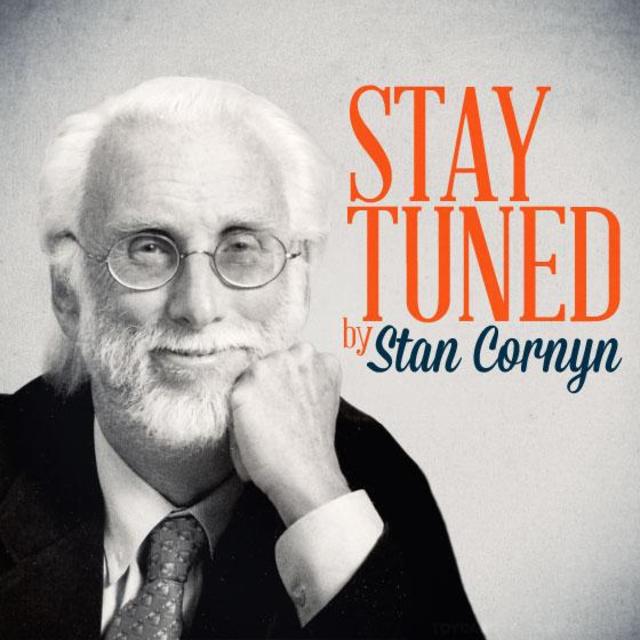Stay Tuned By Stan Cornyn: Gordon Lightfoot

Every Tuesday and Thursday, former Warner Bros. Records executive and industry insider Stan Cornyn ruminates on the past, present, and future of the music business.
1970-1978
Coming to Warner/Reprise from his first label, United Artists, Canadian Gordon Lightfoot had already become a singing heavyweight, having experienced a decade of singing his songs on the road. He had become one of Canada’s mighty song writers, like Joni Mitchell, Buffy St. Marie, and Leonard Cohen.
He’d been managed since 1964 by Al Grossman out of New York (who also managed Peter, Paul & Mary; Bob Dylan; Ian & Sylvia; that gang).
With strong management and Gordon’s major song writing talent, in the 1960s, Gordon-the-artist grew larger. He reached Hollywood/Burbank’s interest after doing nine concerts with Peter, Paul & Mary (the Hollywood Bowl, the Troubadour in 1968). In 1969, he signed with Reprise.
The year he started singing Burbank-style, his sales took off like a red hot beaver. This was the age of the “singer-songwriter,” and that co-occupation worked well for Lightfoot for his long and productive life.
If You Could Read My Mind
An album filled with Lightfoot’s special songs and stories about the world out there, whether in Spain, or undersea, or on a train ride.
His first album, produced by Lenny Waronker and Joe Wissert at Sunwest Sounds in Hollywood. Randy Newman did some orchestrating, accepting the folk feeling of this era of Lightfoot. These men with good ears showed off, and amid the many Lightfoot songs sneaked one other too-good-to-pass-up: “Me and Bobby McGee” before Janis Joplin embraced that tune.
The LP was named Sit Down Young Stranger. It came to market in May, but that album’s title would soon be changed.
The song that went to #1 was in his album, but not on the cover. That quickly made necessary a new cover for the LP:
The Cover, Before . . . . . . . . And After
The reason for the change came from a song Lightfoot that his recent divorce had made him feel while sitting alone in his vacant Toronto home one summer: “If You Could Read My Mind.” It depicts his feelings after losing to divorce his ten-year marriage to his Swedish lass, Brita.
If you could read my mind love
What a tale my thoughts could tell
Just like an old time movie
'Bout a ghost from a wishin' well
In a castle dark or a fortress strong
With chains upon my feet
You know that ghost is me
And I will never be set free
As long as I'm a ghost that you can't see
If I could read your mind love
What a tale your thoughts could tell
Just like a paperback novel
The kind that drugstores sell
When you reach the part where the heartaches come
The hero would be me
But heroes often fail
And you won't read that book again
Because the ending's just too hard to take
This major point in Lightfoot’s life can be heard here:
With “If You Could Read My Mind” leading the way, Lightfoot’s renamed album went gold, and up to #12 on the U.S. charts.
Lightfoot was ready for the 1970s, and more albums flowed forth.
Among them:
1972: Don Quixote
There’s “Ode to Big Blue” about a giant whale that lost its whole family while swimming out of the reach of whalers. Still, whale killing goes on.
Big blue had fifty wives and he sired forty sons
Though most of them feel victim to the cruel harpoon guns
Ah but he was too much wise to get caught by the gunners' eyes
And so he lived at sea a hundred years
His mouth was as large as a tunnel so they say
His hide was thick as leather and his eyes quick and small
And his back was all scarred by the times he got away
And he knew the smell of whalers did Big Blue
Also “Alberta Bound”
… inspired by a lonely teenaged girl named Grace he met on a bus traveling to Calgary in 1971. About life’s simple yearnings:
Oh the skyline of Toronto
Is somethin' you'll get onto
But they say you've got to live there for a while
And if you got the money
You can get yourself a honey
A written guarantee to make you smile
But it's snowin' in the city
And the streets and brown and gritty
And I know there's pretty girls all over town
But they never seem to find me
And the one I left behind me
Is the reason that I'll be Alberta bound
1974: Sundown
In 1973, infidelity had grown to stand between his wife Brita and Lightfoot.
Divorce, but what to follow that?
“Sundown” This most famous single concerns the three-year relationship between Lightfoot and his employee-mistress, Cathy Smith. He was still married to Brita. It got crazy for him.
For him, “Sundown” became what he called “a back-alley kind of tune. It’s based on infidelity. I’ve seen both sides of that.” Even while still married to Brita, Lightfoot also got jealous of his mistress, Cathy.
“Sundown” became Lightfoot’s #1 hit ever, with lyrics of a confessional –
Sundown, you better take care
If I find you been creeping 'round my back stairs
Sometimes I think it's a sin
When I feel like I'm winning when I'm losing again
I can see her looking fast in her faded jeans
She's a hard loving woman, got me feeling mean
Sometimes I think it's a shame
When I get feeling better when I'm feeling no pain
Sundown, you better take care
If I find you been creeping 'round my back stairs
Sundown, you better take care
If I find you been creeping 'round my back stairs
Sometimes I think it's a sin
When I feel like I'm winning when I'm losing again
His divorce got viewed as “the most expensive settlement in Canadian history.” Drinking felt better. Temporarily.
Watch and hear “Sundown” here:
On the road.
And “Carefree Highway,” Lightfoot’s hymn to the freedom of the open road. Namely Interstate 17 between Flagstaff and Phoenix in Arizona. It was his follow-up to “Sundown.” He’d seen a road sign outside Flagstaff, and thought it’d make a good title for a song. “I wrote it,” he recalled, “put it in my suitcase, and it stayed there for eight months. The song’s about a girlfriend he had at age 22, named Ann.”
It went up to #10 on the Billboard Hot 100.
Pickin' up the pieces of my sweet shattered dream
I wonder how the old folks are tonight
Her name was Ann and I'll be damned if I recall her face
She left me not knowin' what to do
Carefree highway, let me slip away on you
Carefree highway, you seen better days
The mornin' after blues from my head down to my shoes
Carefree highway, let me slip away
Slip away on you
1976: Summertime Dream
“The Wreck of the Edmund Fitzgerald” Lightfoot wrote this song’s lyrics intensely, in three days. By November, “The Wreck” hit #2 on the singles chart, right behind Rod Stewart’s #1, “Tonight’s the Night.”
“The Wreck” became, according to Lightfoot, his finest work. He’d read about the loss of the SS Edmund Fitzgerald, which sank on November 10 in Lake Superior, losing its entire crew of 29 sailors.
The “Mighty Fitz” sank during a major storm. No survivors to tell us why, but the sinking of the largest ore-carrier in the Great Lakes caught attention, much more from Lightfoot’s portrayal, in his most famous song ever:
The legend lives on from the Chippewa on down
Of the big lake they called 'Gitche Gumee'
The lake, it is said, never gives up her dead
When the skies of November turn gloomy
With a load of iron ore twenty-six thousand tons more
Than the Edmund Fitzgerald weighed empty.
That good ship and crew was a bone to be chewed
When the gales of November came early.
The ship was the pride of the American side
Coming back from some mill in Wisconsin
As the big freighters go, it was bigger than most
With a crew and good captain well seasoned
Concluding some terms with a couple of steel firms
When they left fully loaded for Cleveland
And later that night when the ship's bell rang
Could it be the north wind they'd been feelin'?
Here how Lightfoot’s songs tell mighty stories:
Encore, Encore
And now, with that album done, it’s time to get on with the rest of his life. Gordon Lightfoot goes on a 600-mile Arctic canoe expedition in the Northwest Territories, then come to L.A. to five sold-out concerts at the Universal Amphitheatre. Then more tours, from Anchorage to Honolulu.
Canada’s greatest song writer, Gordon Lightfoot remained on the charts for decades more. Even til now, 40-plus years later. His tenor voice still on Warner-Reprise.
Another two-decades long marriage, then that one over. He gave up booze in 1982.
In his homeland, he is remembered for those songs, about sinking ships and sunken romances. About having played 150 nights at Toronto’s Massey Hall. Still clearly a Canadian. So he hates having his picture taken.
He remains of the era of singer-songwriters, along with Dylan and not many others.
Still, he often tells others about his life’s motto: “Don’t stop now.”
Gord does not have a computer. He still sits at his desk at his big home out on Toronto’s Bridle Path with a blank sheet of paper, a cup of coffee, a package of Kents, sits there and enjoys it. Likes being left alone, so he can get on with work.
-- Stay Tuned

